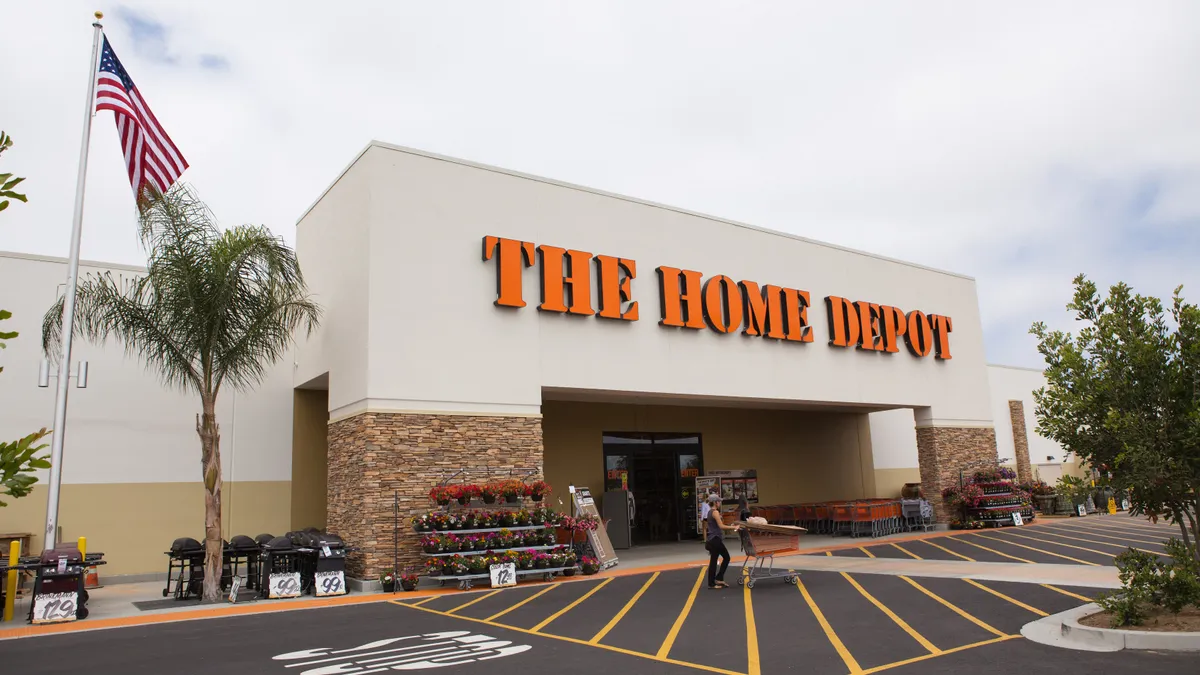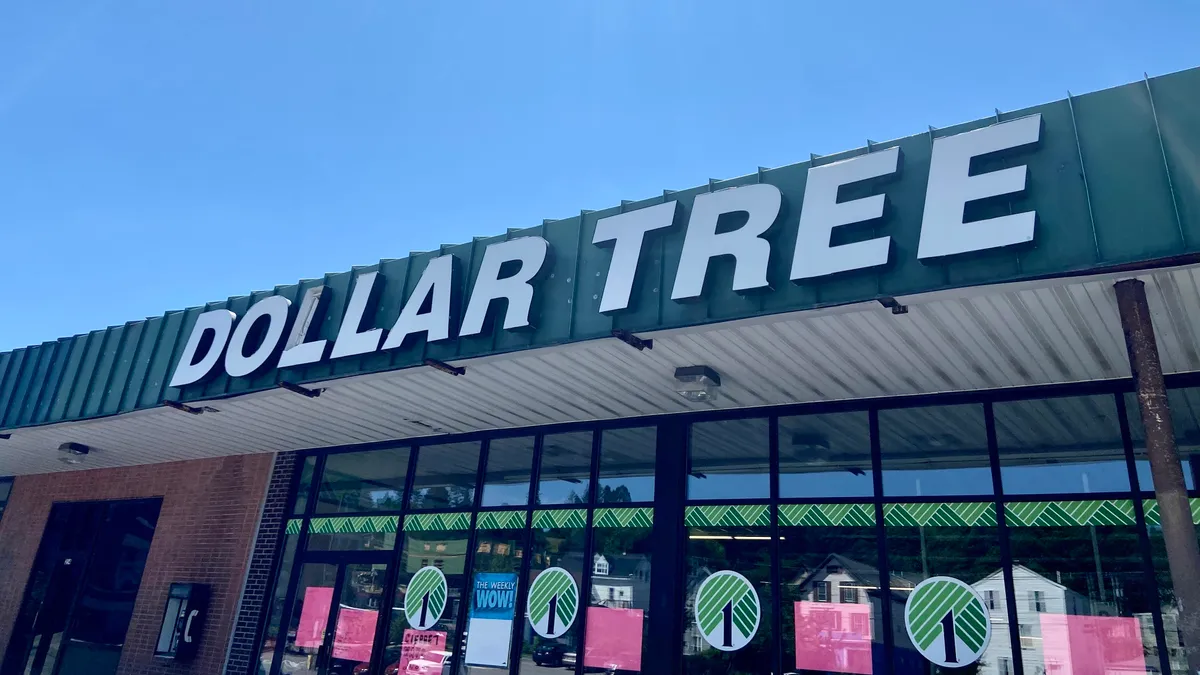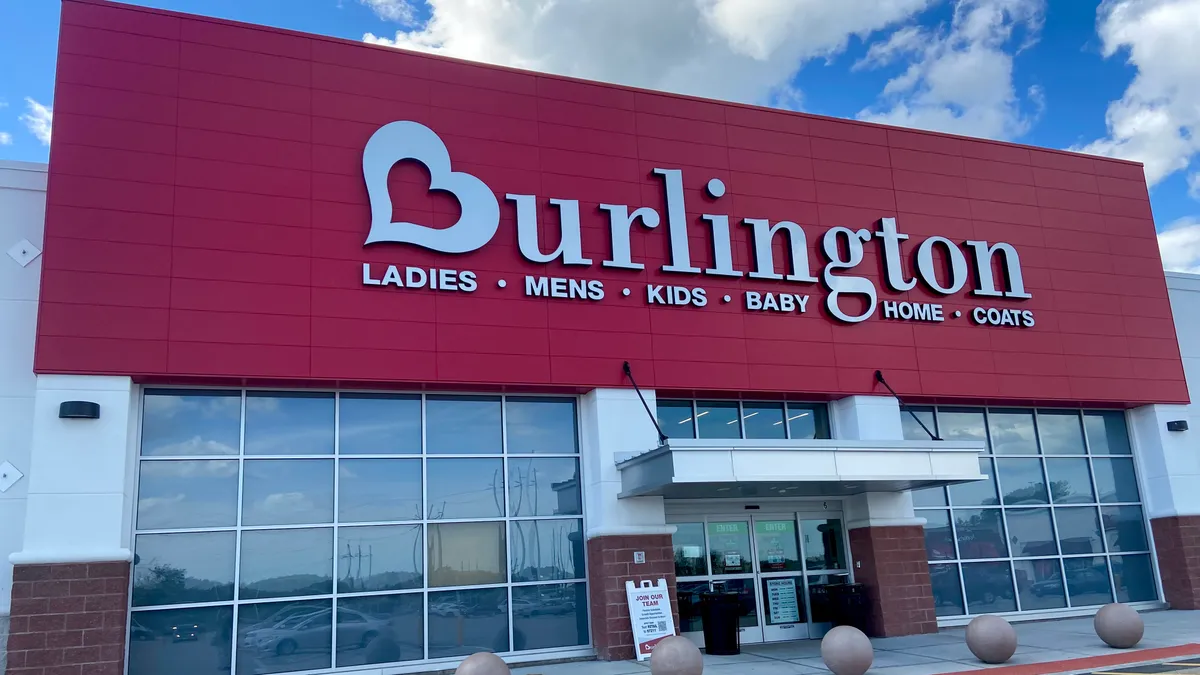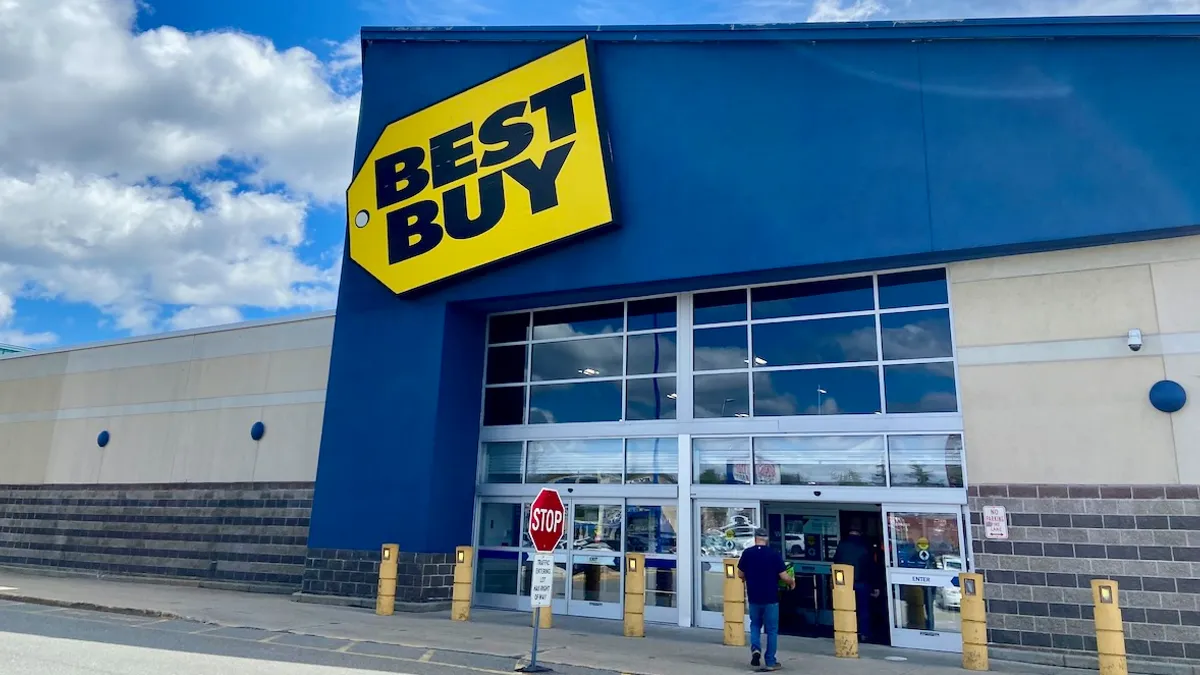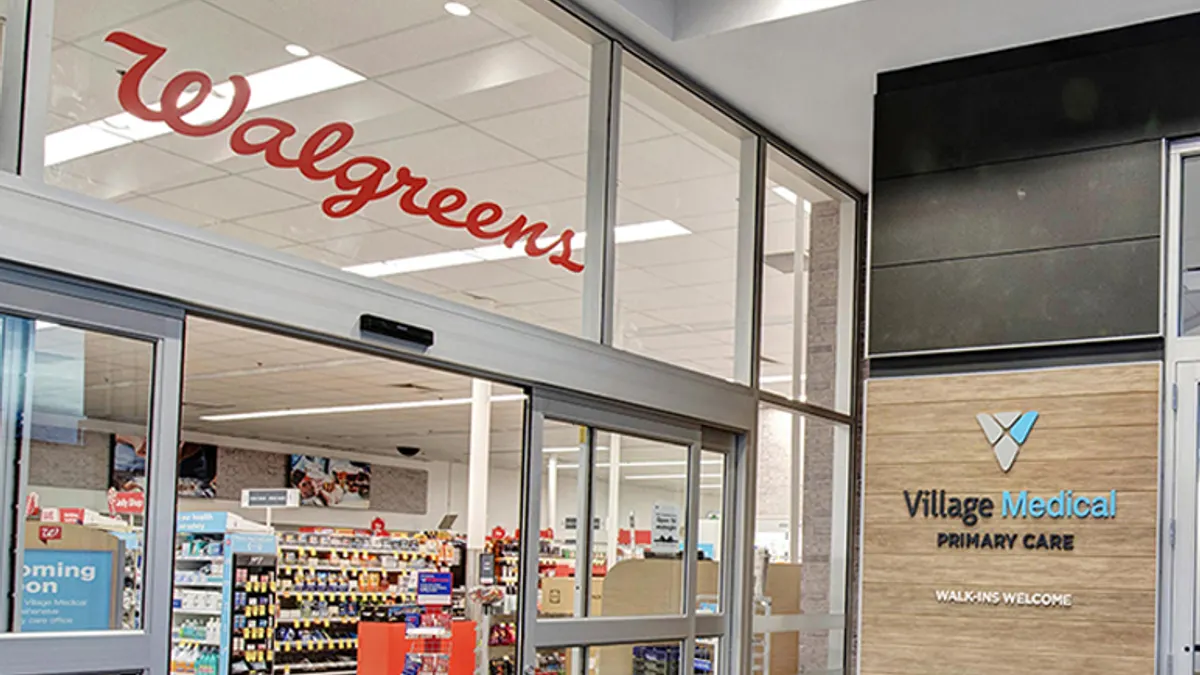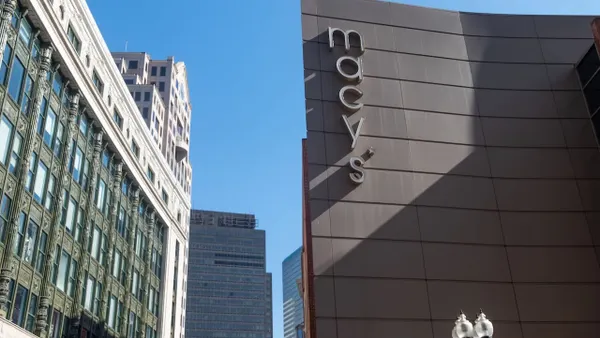The year before Pier 1 hired Alasdair James as its new CEO, the home goods and decor retailer's sales had begun to slide for the first time since the recession era, and its operating income had been cut down to nearly a fourth of what it was four years earlier.
The retailer's performance was not dire by any means, but it was cause for concern and a call to action. James, a former chief of Kmart, said at the time of his appointment, "I believe there is a significant opportunity in front of us to continue to transform the business and drive growth and shareholder value in today's quickly evolving retail landscape." A year later, James and his team unveiled an ambitious turnaround plan, dubbed "Pier 1 2021: A New Day," aimed at getting the company's sales and profits growing within three years.
The plan wasn't up to the task of buffering Pier 1 against that "quickly evolving retail landscape." Sales continued their plummet, and the bottom fell out of the retailer's profits, turning to losses that are haunting it today. James was out by the end of 2018.

A revised turnaround effort and executive team has not managed to dig Pier 1 out of its hole. The hole has only grown deeper, as the company's losses hit a staggering level, bankruptcy chatter surrounds the retailer, and the company looks to close up to nearly half its stores and, according to Debtwire, is beginning a process to sell itself.
Unlike many of its retail peers in distress, and the ranks of bankruptcy filers, Pier 1 does not carry a crushing debt load. It was not a leveraged private equity acquisition. It is the victim only of a fierce competitive landscape and its own misfires.
"Pier 1 is one of the most extreme stories of decline in retail, that didn't need to happen the way it did, that could have been a salvageable, fixable situation," said Moody's vice president and senior analyst Raya Sokolyanska in an interview. "But it was just exacerbated by the company's execution missteps."
'Stuck in the middle'
The first store of what would become Pier 1 opened in San Mateo, California, in 1962. Its early proposition to customers was simple and, at the time, fairly novel. Its owners gamed a valuable dollar to bring in cheap imports from places like Mexico, India and Thailand. The company could sell those goods at a decent markup but at prices still below many competitors, while baby boomers starting their first homes accepted lower product quality to fill their houses with stuff they could afford.
The company itself says that its first customers were boomers "looking for beanbag chairs, love beads and incense," while the early Pier 1 carried everything from "chocolate-covered ants to clothing lines to life-size Spanish suits of armor."
Within a decade, Pier 1, by then headquartered in Fort Worth, Texas, had more than 120 stores and its stock traded on the New York Stock Exchange. By the turn of the century, the retailer was making more than $1.4 billion in sales, nearly a third of that off its credit card members.
"You could see a plate or a pillow from across the room 20 years ago, and say: 'Uh huh, Pier 1.'"

Hart Posen
Professor of Management at the University of Wisconsin
At its peak, Pier 1 offered unique merchandise that sparked a treasure hunt experience for its customers. "If you wanted that kind of imported good with that flavor, there were very few alternatives," Hart Posen, professor of management at the University of Wisconsin, said in an interview. "You could see a plate or a pillow from across the room 20 years ago, and say: 'Uh huh, Pier 1.'"
"You'd never quite know what you'd find," Posen added. "It had a little bit of the ... bargain hunter novelty hunt kind of feel to it. You'd walk out with stuff you weren't expecting to buy when you walked in."
Pier 1 was generally priced about 10% to 20% below those it viewed as its competitors at the time, like Crate and Barrel and Pottery Barn, Telsey Advisory Group's Cristina Fernández said. But more recently, consumers became focused on price and fast-turning merchandise, and players like Wayfair, HomeGoods and Target were able to capitalize on this by offering elevated assortments and similar products as Pier 1, but for less money.
Since 2018, Pier 1 and Bed Bath & Beyond have both forfeited market share, losing 0.5% and 5%, respectively, at the same time that e-commerce player Wayfair gained 3.9% share, according to data from Earnest Research emailed to Retail Dive.
"It put them in a situation where they were not really higher quality to cater to a more affluent customer, but not cheap enough to really attract the value customer," Fernández said in an interview. "They were kind of like stuck in the middle and they just didn't really realize that quick enough and pivot their strategy to be able to carve out a niche for themselves."
At the same time, Pier 1 was increasingly losing sight of who its target customer was, and that was reflected in its merchandise. "These kinds of things in the past you could only find at Pier 1," Posen said. "Now, you can go online at Etsy or on Amazon or on Wayfair, often finding similar things."
Wayfair, however, hasn't been immune to losses of its own. At the end of 2018, the online home goods retailer reported net losses of $504.1 million, an increase of more than 106% from the prior year. "They may not be profitable, but they certainly have a huge selection of merchandise offered at decent pricing," Wedbush's Seth Basham said in an interview.
"Their merchandising strategy, whatever it's been, has missed the mark repeatedly."

Philip Emma
Debtwire Retail Analyst
For Pier 1's own e-commerce efforts, the retailer initially launched its website in 2000, but it wasn't until years later that the retailer really went all-in on its e-commerce initiative. "They were late to the game," Fernández said, adding that instead of attracting a new set of customers, it was simply "a channel shift" for existing ones.
The digital efforts proved "clear that they were cannibalizing a lot of their in-store sales," Basham added. While Pier 1's e-commerce grew to represent about 25% of total net sales at the end of 2018, its revenue was on the decline, falling 1.6% year over year. The e-commerce efforts also further burdened Pier 1's financial situation due to the cost of building out the site, its capabilities and infrastructure, as well as the cost of shipping products to consumers.
"That really put a lot of pressure on their profits so their margins went down," Fernández added.
'Missed the mark repeatedly'
As Pier 1 continued to struggle, the retailer had to respond to the ascendance of its online, off-price and mass-merchant competitors. But every turnaround comes with the risk of execution failure, and some, such as that of J.C. Penney under former CEO Ron Johnson, even alienate customers and depress sales further.
In Pier 1's case, the plan revolved around growing its sales and targeting key demographics, including millennials, in part by competing more on price and revamping its marketing while improving its omnichannel capabilities and hunting for supply chain savings.
Some six months after Pier 1 announced "A New Day," it reported comparable sales declines of more than 11% and a net loss surpassing $50 million in a quarter. James said at the time the company had already retooled its marketing and assortment in response and were "encouraged by early signs of improvement in some of our key customer metrics in recent weeks." He would step down a few months later.
Sokolyanska described the reboot initiative as an "overly ambitious program" that aimed to redesign the store fleet, refresh assortment, lower prices, renegotiate vendor contracts and launch a new marketing approach all at once. The merchandise revamp she called "a big miss," adding that "the lower quality did not meet customer expectations."
At the same time, James made a push to move further away from Pier 1's furniture offering, according to Fernández, but the execution of rebooting its merchandise missed, leaving products in stores at the wrong time. "When they tried to roll it out, the inventory didn't get to the stores in time, so they just completely missed the season," she added.
Sales have since continued their decline, even after the company reversed course. Losses have mounted. Credit downgrades have come in a steady stream. In January, Pier 1 for the first time raised doubt about its ability to continue operating as a "going concern."

In September, Interim CEO Cheryl Bachelder said, "We've seen customers coming in with catalogs in hand that are dogeared looking for specific items, and it's been a while since we've seen that at Pier 1," adding that "we're encouraged by their response to the fresh merchandise and the fresh marketing," according to a Seeking Alpha transcript.
As Debtwire retail analyst Philip Emma noted in a January report, even with that (anecdotal) customer engagement, Pier 1's comp sales "continue to be among the worst in retail." In an interview, Emma pointed to continuous shakeups in the C-suite at Pier 1 over the years. "You've had a lot of turnover at the management level," he said. "So what's been their merchandising direction?"
He added that Bachelder's remark about customers coming in with dogeared catalogs, as sales continue their fall, is "a sign that their merchandising strategy, whatever it's been, has missed the mark repeatedly."
The consequence of all this was to turn a retailer — that until fairly recently was profitable — into a cash-burning machine. At the end of May 2017, the company made quarterly EBITDA of $11.6 million and had long-term debt of less than $200 million. A year later, as the turnaround launched, earnings bottomed out, with EBITDA hitting negative $18.7 million. For the same period in 2019, that figure was negative $64.2 million, and long-term debt had spiked to $245.3 million as the company financed its losses.
What happens next?
Executive turnover, Emma said, could also explain why Pier 1 has closed few stores relative to other retailers that have hemorrhaged sales in recent years — until this month, when Pier 1 revealed plans to close as many as 450 locations.
"They were closing a couple of stores a year, here and there. They weren't closing stores en masse during the period maybe two years ago when the numbers really started to turn," Emma said. "Had you started to close stores at that point … maybe you could have changed the trajectory of the business, because you would have generated value at the point where you aren't continuing to fund losses."
The volume of closures announced in January surprised some analysts. "We would not have expected that number of store closures relative to the current capital structure," Diya Iyer, director of S&P Global's restaurant and retail ratings, said in an interview.
Rather than debt, Pier 1's danger is its cash burn and a looming maturity due next year. The retailer's closure announcement won't necessarily be the final word on how many stores it closes. A lot can happen in the meantime. James Van Horn, a partner in Barnes & Thornburg's restructuring and insolvency practice, said in an interview that there is a lot of negotiating and "horse trading" going on with landlords behind the scenes after a major closure announcement, with complex agreements about which stores will actually close.
And that 450 headline closure figure could represent "what they viewed as the worst case, or close to the worst case," which Pier 1 could have announced publicly "in order to force optimal deals with landlords," Van Horn said.
But store closures won't necessarily keep Pier 1 out of bankruptcy, and a Chapter 11 may well prove necessary to follow through on the plan. In a report following the closure announcement, Sokolyanska wrote, "In our view, a Chapter 11 bankruptcy filing is a highly likely scenario, since it would allow Pier 1 to both reduce outstanding debt and exit or renegotiate leases, which may help avoid liquidation."
"However, given the challenging nature of the required turnaround, a Chapter 7 liquidation (either imminently or in a subsequent filing) is also a possibility," she added.
An alternative possibility: Pier 1 could sell itself, in or out of bankruptcy.
Debtwire reported last week that Pier 1 was laying the groundwork for a sale process by hiring Guggenheim Partners as financial advisors.
As for who would want to buy a loss-making retailer, Debtwire's Emma suggested one of the company's large suppliers could potentially be interested parties. A private equity deal for Pier 1 outside of bankruptcy can't be ruled out given the retailer's diminutive market cap — but a firm would have to have a "strong conviction" that it could slash Pier 1's costs and quickly turn it around, Emma said. He also said that Wayfair couldn't necessarily be ruled out either given Amazon and other e-commerce player's investments in physical retail.
A sale could take many forms, and may well never happen. "Given the economics of the business, and the performance of the business, there's going to be a pretty limited universe of people who would be interested," Emma said.
'No one will notice'
Whether Pier 1 reorganizes, liquidates, sells itself or chugs along outside of bankruptcy, one thing is all but certain: it will be closing a lot of stores. In the worst case, it could close all of them.
Among the retailers benefiting the most from the home goods retailer shuttering stores are Wayfair, HomeGoods, Target and At Home. Looking at geographic proximity, At Home has significant overlap with 60% of its stores within three miles of a Pier 1 store, followed by HomeGoods (59%) and Target (35%), according to a recent Telsey Advisory Group report. Bed Bath & Beyond has 47% of stores within one mile of a Pier 1 and 59% within three miles, though the firm notes it "has not been able to capitalize on Pier 1's displaced sales given its own struggles and less exposure to home decor."
Foot traffic analytics firm Placer.ai also found overlap among consumers analyzed in California, Florida, New York and Pennsylvania. In all states, the firm found that at least 8% of Pier 1 shoppers also visited a Target, with overlap in HomeGoods and Walmart following behind.
"No one will care and no one will notice."

Hart Posen
Professor of Management at the University of Wisconsin
And data from Earnest Research found that in 2019, the number of Pier 1 customers also shopping at Wayfair reached 25%, a 4% increase from the previous year. Among the overlapping customers, they decreased their spend at Pier 1 by 11% to $187, while they increased it at Wayfair by 6% to $648, though the firm noted that the shared customers are not Pier 1's biggest spenders.
It's important to remember that Pier 1 doesn't hold the same place in its market that Toys R Us or Sports Authority did when they filed for bankruptcy. Toys R Us represented $6.4 billion of the $54 billion U.S. toy and baby market and Sports Authority held $2.6 billion of the $70 billion U.S. sporting goods market, according to the Tesley report.
However, analysts at the firm placed Pier 1 sales at the end of 2019 at about $1.3 billion, representing just a fraction of the massive $200 billion U.S. home furnishings market. At the same time, Target's home furnishing sales at the end of fiscal 2018 were $14.3 billion and Wayfair's were $6.8 billion. Even Bed Bath & Beyond, a retailer in the segment currently facing its own set of challenges, reported $12 billion in sales in 2018.
So while its competitors may see a slight blip from a potential Pier 1 liquidation, "it won't affect the bottom line of Amazon or Wayfair in any meaningful way. Or HomeGoods or any of those other firms," Posen said. "No one will care and no one will notice."








